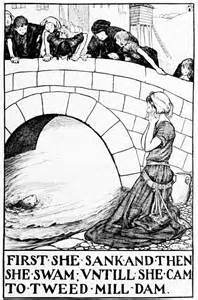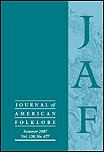 The well of Inis Clothran, where Medb of Cruachan met her death, has murky depths, or at least, the tale of Medb and her sisters is somewhat opaque.
The well of Inis Clothran, where Medb of Cruachan met her death, has murky depths, or at least, the tale of Medb and her sisters is somewhat opaque.
As we discussed in the podcast , there are some unanswered questions. Does Medb kill Cothru or Ethne, or both of her sisters? Is Furbaide Clothru’s son or Ethne’s? And that is just for starters.
From the story teller-s view, there are some surprises. As stories get told and re-told, carried by word of mouth from place to place and from time to time, it is the memorable and visually interesting motifs that are frequently retained. This is not particularly surprising. Wild passions, dreadful deaths and unexpected revenges are enduringly popular.
You might expect that Medb’s dastardly sword-slaying of her sister and Furbaide’s choice of a piece of cheese as a lethal weapon would be the best remembered elements of the story. However, this does not seem to be the case.
It is probable that nineteenth century recordings of the story choose to play down Clothru’s diplomatic incest, Medh’s unwomanly sword-wielding and ignore the lethal cheese- altogether. Indeed, the texts we reference in the podcast, maintain that Ferbaide executes his aunt solely because of her bellicosity towards Ulster.
One of the most persistent parts of the tale, at least locally, is Medb’s act of sororcide regarding Ethne. In an act of userpation, Medb drowns her sister in the river Inny, (named for Ethne). I have wondered if this part of the story might have survived owing to its similarity to the popular ballad, ‘The Twa (Two) Sisters’.
‘Twa Sister’s’ first appears on a broadside in 1656 as ‘The Miller and the King’s Daughter’. Variants and alternate titles include: ‘The Cruel Sister’, ‘The Bonnie Milldams of Binnorie’, ‘The Bonny Bows o’ London’, ‘Binnorie’. ‘Sister, Dear Sister’ , ‘The Wind and the Rain’ among others. Its popularity has transferred the setting to a wide variety of river side locations, from Edinburgh to London, from the Thames to the Tweed.
The ballad is generally regarded as originating in Scotland although versions are known all over Scandinavia. Whether it came from there or traveled north is not certain. For those who wish to research this issue further I can recommend ‘The Twa Sisters Going Which Way?’ By Harbison Parker
The Journal of American Folklore
Vol. 64, No. 254 (Oct. – Dec., 1951), pp. 347-360
Published by: American Folklore Society
Article Stable URL: http://www.jstor.org/stable/537003
http://www.jstor.org/discover/10.2307/537003?uid=3738232&uid=2&uid=4&sid=21102313401051
The Ballad was collected by Francis James Child in the late nineteenth century. The Child Ballads are a collection of 305 ballads from England and Scotland, and their American variants, Child has 21 versions of lyrics for this song. For a complete set of the lyrics go to:
http://www.contemplator.com/child/variant10.html
In most versions, two sisters, sometimes two of three, go for a walk and one throws the other into a river. The cause is generally jealousy over a lover and avarice for land and goods, either owned or to be gained on marriage. The body is usually discovered by a miller when the body is caught in a dam, or found by bards who mistake the corpse for a swan and so on.
The murder may be discovered by a musical instrument, often a harp or pipe that is made from the murdered girl’s bones. This instrument sings the crime. In one Norse variant, a pipe is called for the family to play so that they may discover who killed the girl. When her sister plays it, blood flows, and her guilt is revealed. Her fate is to be dismembered by horses. This “trial” is reminiscent of the old custom of touching a corpse to decide innocence or guilt. If the murderer touched the corpse of his victim it would bleed fresh blood, (Not a bad bet for a murderer then.)
There is one Swedish version where the miller returns the half drowned maiden back to her family. The girl forgives her sister but this is unusual.
The ballad has remained popular. It has been recorded by several bands in recent years, including Pentangle and Clannad. There are also American versions. http://youtu.be/9CDbAiG3IEs
The Clannad Version
[youtube https://www.youtube.com/watch?v=rheAm_ScHOM&w=420&h=315]
The Pentangle Version (my personal favourite)
[youtube https://www.youtube.com/watch?v=1gAyqruWCfk&w=420&h=315]
An excellent version of Binnorie
There is very little likelihood that the story of Medb and her sisters is directly connected with the ballad. The song is, almost certainly Scottish and not Irish. However, there are some similarities. At least one of the Child variants references three sisters, although only two are involved in the murder, It is generally the older sister who kills the youngest, although the Clannad version reverses this. The motive for the murder is, in almost every case, sexual jealousy. However, the elder sister is equally concerned with the acquisition of land and status. This, of course, is also Medb’s motive for murder.
It is even possible that the making of a musical instrument with bones, especially finger bones, might connect with Ethne’s gruesome treatment of her children, although this is somewhat tenuous.
Another connection worth considering is the imaginative and somewhat gruesome deaths meted out to the murderous sibling. Variants of the ballad have her boiled or even dismembered, as has been mentioned above. None, however, can be compared to the bizarre means of Medb’s own death; the infamous piece of hard cheese.
The tale of Medb and her sisters is likely to be far older than the ballad but it could be that the widespread popularity of the ballad has focused on the part of the story concerning Ethne’s death and kept the story alive.
Enjoy the ballad. It is a good one.
Chris Thompson June 13
